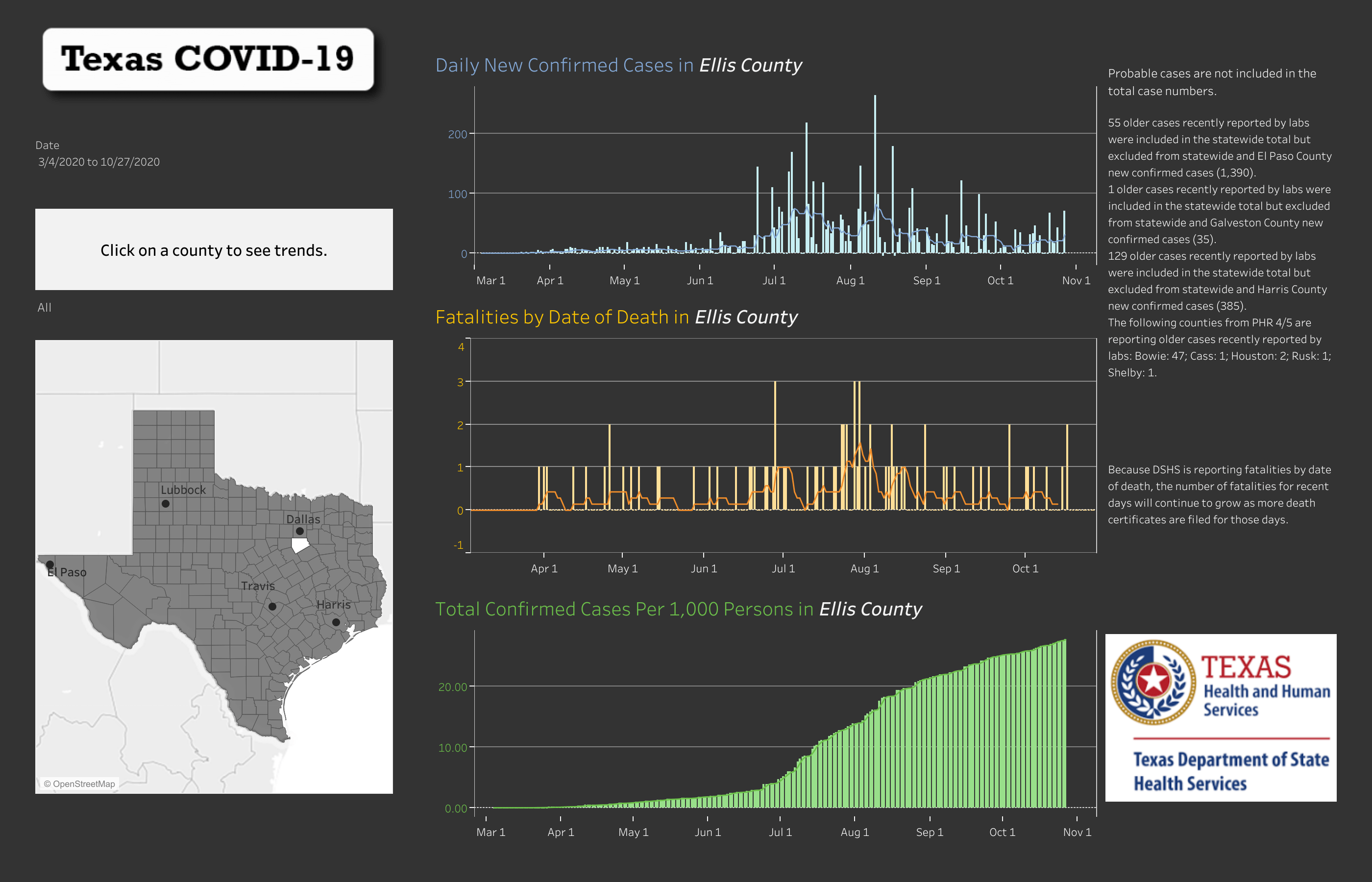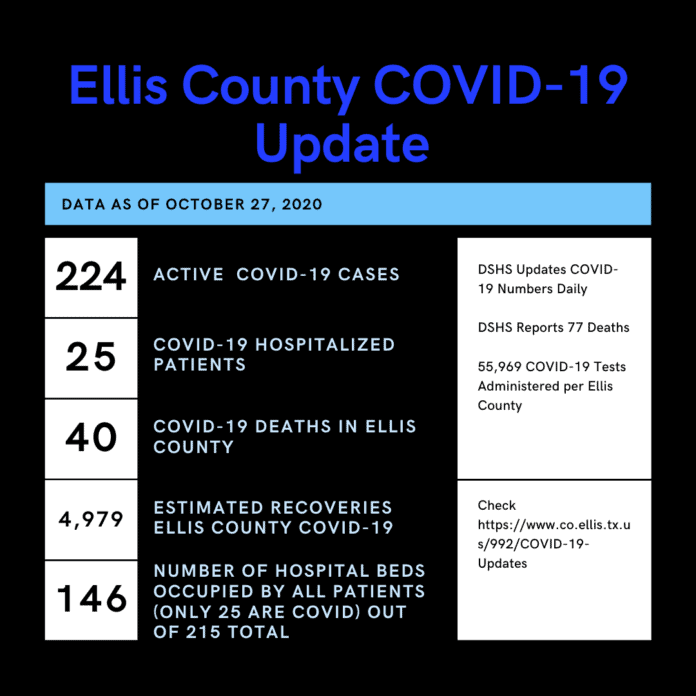70 New COVID-19 Cases In Ellis County
According to the DSHS COVID-19 Dashboard there weren’t any new COVID-19 cases reported on October 25 and 26th, but today the County is reporting 70 new COVID-19 cases. While Ellis County’s dashboard still reports 40 deaths, the DSHS dashboard shows 77 fatalities in Ellis County as of 10/27.
Our last report on October 23, showed Ellis County reporting 173 active cases with DSHS showing 76 fatalities. So, over four days the active case count has increased by 71 with one new death being reported. Since the Ellis County data only shows 40 deaths, we don’t have a breakdown by city.

For COVID-19 questions in Ellis County including questions about testing you can call 211 extension 6 on Monday-Friday from 7am- 6pm or email coronavirus@dshs.texas.gov. If you’re looking for a testing site you can visit www.doineedacovid19test.com.
Please note the CDC recently updated their definition of “close contact”. From their website: “Someone who was within 6 feet of an infected person for a cumulative total of 15 minutes or more over a 24-hour period* starting from 2 days before illness onset (or, for asymptomatic patients, 2 days prior to test specimen collection) until the time the patient is isolated.”
From the CDC, people with COVID-19 have had a wide range of symptoms reported – ranging from mild symptoms to severe illness. Symptoms may appear 2-14 days after exposure to the virus. People with these symptoms may have COVID-19:
- Fever or chills
- Cough
- Shortness of breath or difficulty breathing
- Fatigue
- Muscle or body aches
- Headache
- New loss of taste or smell
- Sore throat
- Congestion or runny nose
- Nausea or vomiting
- Diarrhea
This list does not include all possible symptoms. CDC will continue to update this list as we learn more about COVID-19.
DSHS recommends these everyday actions to help prevent the spread of any respiratory virus, including COVID‑19:
- Wash hands often for 20 seconds and encourage others to do the same. Use hand sanitizer with at least 60% alcohol if soap and water are unavailable.
- Wear a cloth face covering in public and during large gatherings.
- Cover coughs and sneezes with a tissue, then throw the tissue away.
- Avoid touching your eyes, nose, and mouth with unwashed hands.
- Disinfect surfaces, buttons, handles, knobs, and other places touched often.
- Stay six feet apart from others.
- Avoid close contact with people who are sick.
- DSHS recommends that you practice social distancing. Social distancing involves staying away from other people to avoid catching or spreading illness. It’s a fancy term for avoiding crowds and minimizing physical contact. This could mean avoiding concerts or weddings, skipping the handshake, and/or staying at least six feet away from others.
Additionally, DSHS and the CDC recommend using simple cloth face coverings in public to help slow the spread of the virus:














